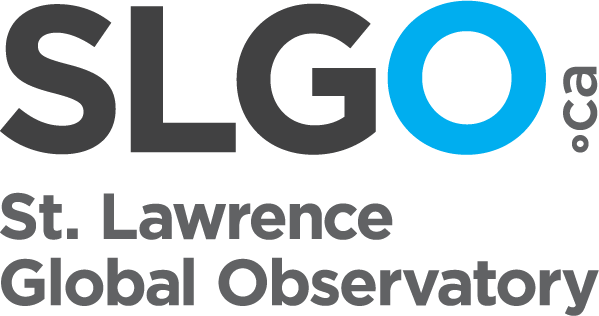This inventory, taken from September 26 to October 3, 2019, aimed to describe the structures in species and then in functional traits of the macroalgae and benthic macroinvertebrate communities from the small estuaries of the Upper North Shore of Quebec, namely Barthelemy Bay and the Colombier, Mistassini, Franquelin and Saint-Nicolas rivers. Three hypoosmotic stress levels and one control level (marine water) were targeted for each of the selected estuaries, with eight quadrats per level. The highest stress level sites were located closest to the river mouths (where freshwater inflow is greatest at low tide) while the zero stress sites were located at the edge of the St. Lawrence Lower Estuary (where high salinity is stable). Salinity was measured with a portable refractometer and a Castaway-type CTD (Conductivity-Temperature-Density) probe. The inventory was conducted using a stratified random sampling design and the sampling unit was a quadrat measuring 25 x 25 cm. The dataset provided includes information on abiotic factors (salinity, substrate type) as well as the presence of various species of macroalgae and benthic macroinvertebrates, identified to the lowest possible species or taxonomic level. To obtain the density and biomass of the various species identified, contact Valentine Loiseau.
This inventory is part of a doctoral study on global changes in the St. Lawrence system, mainly the study of marine benthic communities in response to changes in salinity, to ensure proper management of the environment in the face of future changes. The study has one main objective and four secondary objectives. The main objective is to describe the response of benthic communities in the mediolittoral zone to hypoosmotic stress (i.e. an abrupt decrease in salinity). Secondary objectives are: (1) to describe the structure and levels of specific and functional diversity of mediolittoral benthic macroinvertebrate and macroalgal communities along a salinity gradient; (2) to create a database of functional traits of interest for the most common species of the St. Lawrence marine mediolittoral zones; (3) to measure the responses (mortality, growth rate, calorific content) of three species of molluscs in the mediolittoral zone to a hypoosmotic stress gradient; and (4) to measure the responses of several species of benthic macroinvertebrates in the mediolittoral zone to several combined factors (hypoosmotic stress, acidification and turbidity increase).
This project was funded by DFO's Coastal Environmental Baseline Program under Canada’s Oceans Protection Plan (OPP). This initiative aims at acquiring environmental baseline data that contribute to the characterization of important coastal areas and to support evidence-based assessments and management decisions, while preserving marine ecosystems. Consult the dataset also available on the Open Data Canada portal.
 10.26071/ogsl-4bb77d86-b94e
10.26071/ogsl-4bb77d86-b94e



